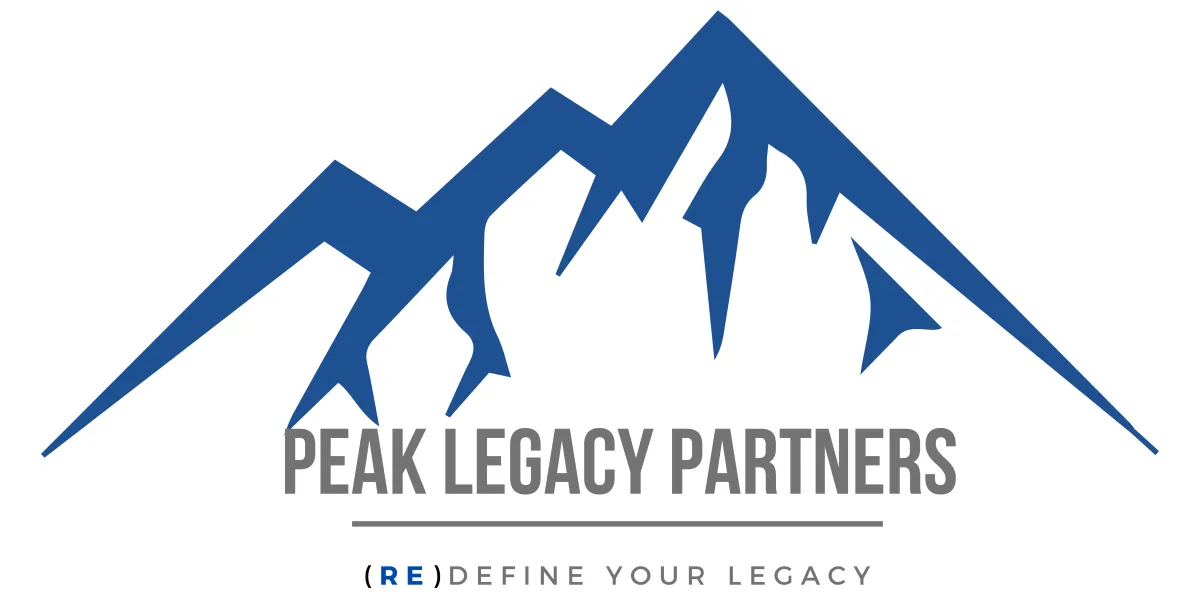
Check Out our Latest Blog Posts

Building Your Financial Legacy: The 4 Components of a P.E.A.K. Legacy Plan

Contrary to popular belief, legacy planning begins much earlier than we often realize. Life events and changes in circumstances often prompt us to think about our future, but most people don't follow a specific timeline. Depending on how proactive you've been, you might find yourself somewhere along the continuum of our PEAK Legacy Ascension process.
By addressing each of the four components, you'll have a solid foundation for your legacy plan. Let's dive into the P.E.A.K. process:
P - Protection
E - Efficiency
A - Accelerated Accumulation
K - Kingdom Legacy Creation
Protection
Think back to the time when you got married, had your first child, or purchased your first home. The sense of responsibility that comes with these milestones is immense. Protection is the foundation of your financial plan, safeguarding your family against unforeseen events. Here are some critical forms of protection:

Legal Documents: Wills, trusts, powers of attorney, buy/sell agreements, business operating agreements.
Income Disruption Planning: Ensure continuity of income in case of death, accident, or business disruption.
Medical and Personal Coverage: Health insurance, accident coverage, and protection for your home and belongings.
Umbrella Policy: Additional liability coverage that goes beyond your existing policies.
Personal Story: Several years ago, I experienced a life-changing accident while visiting Fort Lauderdale. Falling from a ninth-floor balcony, I survived thanks to prompt and attentive medical care. This incident highlighted the importance of protection: I had recently secured medical and disability insurance through a new job. Without this protection, the financial burden would have been overwhelming. The total cost of my medical care and lost income exceeded $1,165,000.
While the financial protection was crucial, the non-financial benefits—such as access to top medical care and the ability to focus on recovery without financial stress—were invaluable. The additional time having these benefits offered me during the recovery process also allowed me to prepare and pass my insurance exam. This provided a major turning point in my professional life.
Efficiency
Financial efficiency means making the most of every dollar allocated to your financial improvement. It's not just about return on investment (ROI); it's about having a coordinated approach that protects from the unknown, enables a comfortable lifestyle, prepares for retirement, and ensures wealth transfer to future generations.
To achieve financial efficiency, we must first mitigate major risks and then remove inefficiencies such as taxes, inflation, market losses, and fees. Here are some tips:

Taxes: Employ proactive tax strategies to reduce lifetime tax payments.
Inflation: Ensure a portion of your savings and investments grow in line with rising costs.
Market Losses: Consider accounts with features like downside protection and “lock and reset.”
Fees: Understand total fees over the life of your accounts and ensure you receive adequate benefits for the fees paid.
Accelerated Accumulation
Accelerated accumulation can be reactive or proactive. When faced with an urgent financial need or new priority, increasing the amount or frequency of savings can help. A proactive approach involves strategies that generate compound interest, such as our “Compound Interest Plus” method.
Example: Using this strategy, let’s say you have $100,000 in an account and borrow $50,000 for a real estate investment, you can potentially earn:

An average of around 7% on the $50,000 of unborrowed funds.
A net return of 2.5% on the borrowed funds after loan interest.
Additional returns from the real estate investment.
This strategy can significantly boost your accumulation goals.
Kingdom Legacy
Many view legacy as the distribution of remaining assets at death, but effective legacy planning involves more. Life insurance is a powerful tool for maintaining, transferring, or creating generational wealth. Properly structured policies can maximize growth and minimize costs, adhering to IRS tax codes like TAMRA, TEFRA, and DEFRA.

While there is no reason to be intimidated by the tax codes that determine how to stay within these IRS limits in order to retain tax-favored status, it is recommended that you seek professional guidance from an individual experienced with properly structuring this type of insurance policy.
As a reminder, Term life insurance serves as a temporary solution, but for long-term legacy goals. A life insurance policy can only support your legacy goals if it is in-force at your death, for this reason, we recommend using permanent coverage, to ensure benefits are available when needed most.
Conclusion
Creating a customized PEAK legacy plan involves four core considerations: Protection, Efficiency, Accumulated Acceleration, and Kingdom Legacy Creation. Whether you implement these phases on your own or with professional help, coordination is key to efficient planning.
Call to Action
If you fall into any of the following categories, we have a special offer for you:
You have an existing permanent life insurance policy and want an audit to see if it meets your legacy goals.
You have term coverage and want a comparison with permanent insurance.
You want to identify inefficiencies in your current plan.
You’re ready to create your legacy plan and want to know the initial steps.
Interested in learning more about our preferred vehicles for legacy planning?
To request a copy of our ebook which summarizes the top 20 benefits of our favorite legacy creation tool, CLICK HERE

